Tag: piano
-
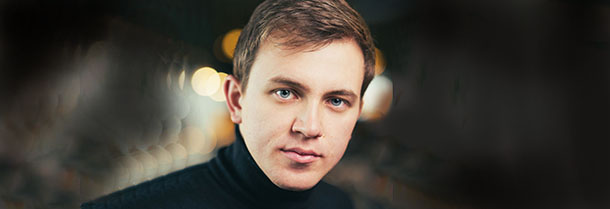
PROGRAM NOTES: FILIPPO GORINI
Johann Sebastian Bach The Art of Fugue BWV 1080 By the 1740s Bach had largely withdrawn from composing new church music for Leipzig’s Thomaskirche, devoting his creative energies instead to a series of large-scale projects that responded more directly to his own personal and professional interests. These monumental works were encyclopedic in scope, systematic in…
-

PROGRAM NOTES: GOLDA SCHULTZ
Clara Schumann Liebst du um Schönheit | Warum willst du andre frage | Am Strande | Lorelei Clara Schumann (née Wieck) was a major figure in nineteenth-century music. As a child prodigy, she toured Europe with her father and teacher Friedrick Wieck, meeting Goethe in Weimar and Paganini in Paris. After her marriage to Robert…
-

PROGRAM NOTES: STEVEN OSBORNE
Franz Schubert Impromptu No. 1 in F minor D. 935 The impromptu is just one of a number of small-scale instrumental genres arising in the early 19th century, known under the collective title of character pieces. Cultivated by composers in the emerging Romantic movement, these pieces presented a simple musical idea in an intimate lyrical…
-

PROGRAM NOTES: DANIEL HSU
Robert Schumann Kinderszenen Op. 15 The character piece, a short work expressing a single mood or illustrating an idea suggested by its titling, was a typical product of the Romantic era, and Robert Schumann was a major contributor to the genre. In 1838 he composed 30 such works, publishing 13 of them in a collection…
-
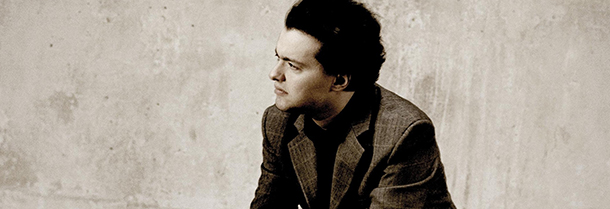
PROGRAM NOTES: EVGENY KISSIN
Johann Sebastian Bach Toccata and Fugue in D minor BWV 565 (arr. Tausig) While keyboard transcription and political debate might at first blush seem to be radically different fields of endeavour, one justly famous incident on American television stands emblematic of the risks run, in both disciplines, for those who would engage in rhetorical posturing.…
-

PROGRAM NOTES: STEPHEN WAARTS
Claude Debussy Sonata for Violin and Piano in G minor L. 140 The sound of Debussy’s music confounded many of his contemporaries. From a tonal point of view, it floated in stasis in a world of pastel sounds that arrived at their destination more by whim than by design. How, they asked, could what he…
-

PROGRAM NOTES: ISATA KANNEH-MASON
Wolfgang Amadeus Mozart Sonata No. 14 in C minor K. 457 In 1785 Mozart’s Sonata in C minor was published together with the composer’s Fantasia in C minor as a single opus, with the Fantasia forming a kind of introductory ‘prelude’ to the sonata. Given that the Fantasia was composed many months after the sonata,…
-
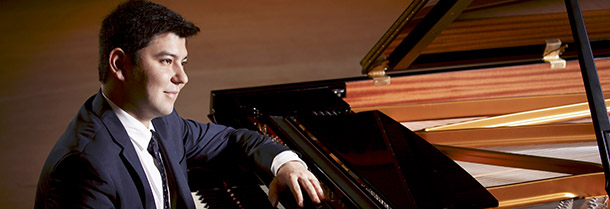
PROGRAM NOTES: BEHZOD ABDURAIMOV
Domenico Scarlatti Sonata in B minor K 27 Sonata in D major K 96 The 550-odd sonatas of Domenico Scarlatti are perhaps the most successful works to migrate from the harpsichord to the modern grand piano. Their transparent texture of simple two- and three-part keyboard writing has one foot in the imitative counterpoint of the…
-
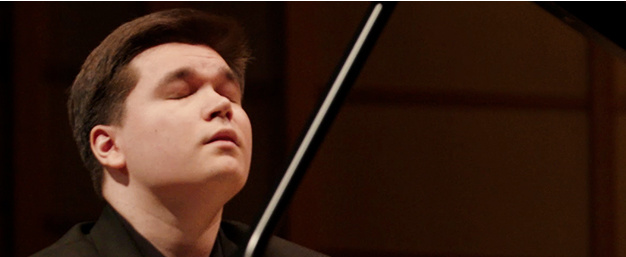
PROGRAM NOTES: TRISTAN TEO
PROGRAM NOTES: TRISTAN TEO Robert Schumann Widmung (arr. Franz Liszt) The year 1840 was Robert Schumann’s Liederjahr, his ‘year of song’. After 10 years of writing almost exclusively for the piano, Schumann in 1840 burst into song, composing well over a hundred Lieder. One song collection, Myrthen Op. 25, had a special meaning for…
-
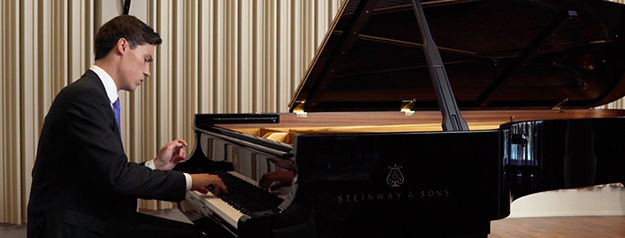
PROGRAM NOTES: JAEDEN IZIK-DZURKO
Alexander Scriabin Valse Op. 38 It is easy to see why Alexander Scriabin was known as “the Russian Chopin.” Like his Polish musical forebear he wrote almost exclusively for the piano and began his career by composing mazurkas, waltzes, nocturnes, preludes and études. In this Valse we catch the composer near the end of his…

